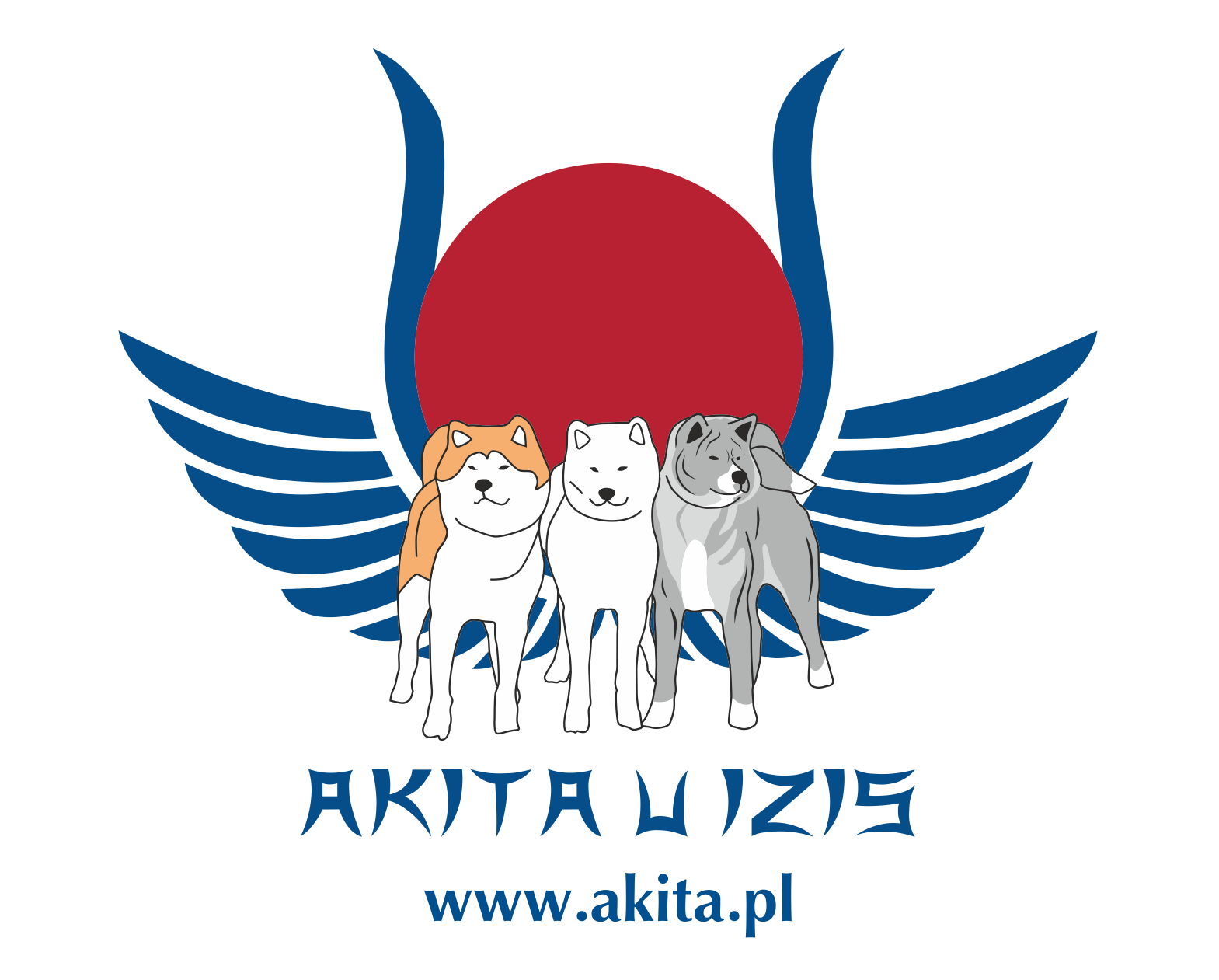Shikoku is a breed for connoisseurs of the true natural beauty and original charm of these extremely rare hunting dogs. Above all, however, it is a dog for people who appreciate independence and are able to properly train the dog using consistent behavior. Shikoku are stubborn, they have their own opinion on every topic and it is not necessarily consistent with our view on a given matter ;-). You need to respect their individuality and not try to break them, but still guide the dog wisely and skillfully show him his place in the pack hierarchy.
The average weight of females is: 17-19 kg, and the average weight of males is: 19-22 kg.
Average age: 12-15 years (some 17-year-olds, and the oldest shikoku outside Japan is 11 years old).
The character of the shikoku is typical of the Spitz, i.e. it is an independent and self-confident dog. Strongly dominant towards other dogs, requires early socialization with the environment. A fast and agile dog, very agile, with a very strong hunting instinct and an excellent sense of smell. He has a strong guarding instinct. Of course, as in every breed, there are more and less dominant individuals. Shikoku is a wonderful companion dog at home, but outdoors his extremely developed hunting instinct may cause problems during walks. He is a dog that always needs something to do, he loves chasing a ball, chasing leaves swirling in the wind, or simply running ahead to release his energy. Shikoku are nature dogs. They need a lot of frequent exercise and a lot of space. Being confined to tight concrete pens causes stress in bitches, manifesting itself, among others, in: absorption of fetuses, so shikoku is completely unsuitable for pen breeding.
As an extremely intelligent but at the same time extremely independent dog, Shikoku is not easy to train. As a hunting dog with excellent sense of smell and eyesight, it is very active and interested in everything that is happening outside, so it is difficult for the owner to focus his attention on himself. At home, he loves fetching and following commands. But outside the house there are so many more interesting things that you must see, smell, chase (birds, cats, other dogs) and, in addition, people to greet and "kiss". Outside, in order to better see what is happening in the distance, he often stands on two legs, doing the so-called bunny and can stay in this position for so long that it can practically be adopted as one of the standard shikoku positions 😉
Shikoku is an ideal homebody and family companion. Although he likes to bark outside sometimes, at home he is as quiet as an Akita and does not bark unnecessarily. However, he is very vigilant and if something really worries him, he will let us know about it. He likes to play with toys and invites household members to play with him (if he does it too insistently, ignore him). Some shikoku are terrible lickers and can spend several hours without leaving their owner's lap (they don't mind if the owner is sitting at the computer or watching TV, as long as he hugs them and scratches them behind the ears). Others (the more dominant ones) get bored quickly and immediately run away to play with other dogs or run after the ball. If we don't teach him this ourselves, he won't beg at the table or steal food from the plate. As a puppy, he learns to stay clean longer than, for example, an Akita, but this is probably because there are so many new things to learn during a walk that he simply does not have time to focus on doing his business. It may happen that during a several-hour walk, the puppy "does not find time" to relieve itself... Shikoku is a dog for persistent and extremely patient people...
If a shikoku has been properly raised and socialized with people from an early age, it will treat them very well. However, for some people his exuberance may be tiring because, for example, he likes to lick his face. He generally accepts dogs he has grown up with or has become acquainted with (especially those of the opposite sex), although it can always happen that two specific dogs will not like each other if both are equally dominant. Therefore, I advise against keeping two shikoku of the same sex at the same age. If we're trying to join the herd, we'll just get a puppy. Joining the herd of an adult shikoku of the same sex is practically doomed to failure, as I had the opportunity to see for myself. Dogs from outside the pack are not accepted by shikoku on walks (especially dogs of the same sex, but not only) unless he has formed a friendship with them as a puppy. Shikoku sometimes develops a sudden liking for a strange dog of the opposite sex and wants to play with it. Sometimes a strange dog of the opposite sex arouses respect in the shikoku with its size and then tries to encourage it to play, but at the same time shows its submissiveness. However, the rule is that adult shikoku is not friendly towards strange dogs.
Shikoku is by no means a breed for beginners. This dog is a real challenge. Not suitable for people who lack patience. It should not be bought by people who are unable to keep it occupied and go for walks. He loves running and is extremely fast, so slow walks with pensioners are not for this dog. Despite its average size, it is strong and can pull hard, so it is not suitable for a child to walk due to its dominant nature. To sum up, a shikoku is more difficult to raise than two akitas put together.
As a primary Spitz, it is one of the healthiest and most resistant breeds. However, like any dog, it can get sick and then the owner owes it the best care. People often forget that a dog is a responsibility. The shikoku breed outside Japan is so new that it is difficult to say what genetic diseases it may suffer from. Generally, Spitz dogs are one of the healthiest FCI groups, and shikoku is a medium-sized Japanese Spitz dog.
When it comes to feeding shikoku, it requires not only good quality food and vitamins but also many natural additives. Before purchasing it, it is worth considering that this is a breed that matures very quickly, so any negligence in feeding will take its toll immediately. Appropriate shikoku nutrition may cost PLN 300 per month in the first two years of a dog's life. This is not a dog for people who save on additives and believe that dry food has everything or that it will eat leftovers from the human table. I do not advise such people to buy a dog so full of energy, which is in constant motion and therefore burns a lot of energy.
The Shikoku breed is considered a national treasure in Japan and it is extremely difficult to take such a high-class dog out of Japan. This is also because in the country of origin, shikoku is mainly in the hands of hunters who are not associated with the JKC (the only Japanese club whose pedigrees can be recognized in the FCI). Outside Japan, the breed is truly unique. There are a dozen or so shikoku in the Netherlands (mostly older dogs imported from Japan), Canada (there are some younger ones, some imported from the Netherlands and some from Japan) and the USA. There are only a few examples of this rare breed in Europe. Apart from my dog, apart from the Netherlands, there are no shikoku of breeding age in Europe. They are either veterans or young people.
I imported the first shikoku (sesame) to Poland on March 8, 2006. I brought another adult dog (from Japan) last year. She is not related to my dog. After her, I had a litter born on September 18, 2007. The father of the litter - in which two red-sesame females were born - was the beautiful Champion living in Canada. AYAME stayed with me from this litter, while Asami went to France.
It is very difficult to buy a shikoku puppy. You need to sign up, make a deposit and wait. From the moment I made the deposit, I waited 3 years for my first shikoku. The cost of purchasing a puppy in Europe is approximately EUR 2,500. In the case of a defective color (e.g. white or black and tan), the puppy costs half this amount, but sterilization is required. However, above all, the decision to buy shikoku must be carefully considered. Just like the Akita, it is not a dog for everyone. In the case of shikoku, this statement somehow takes on a double force. This is a very special dog for very special people. Unfortunately, unlike the Akita, Shikoku is not suitable for the city :-(.
author: Izyda Bach-Żelewska
All rights reserved (01'2008) – COPYRIGHT RESERVED (01'2008)







 Country of origin: Japan.
Country of origin: Japan.